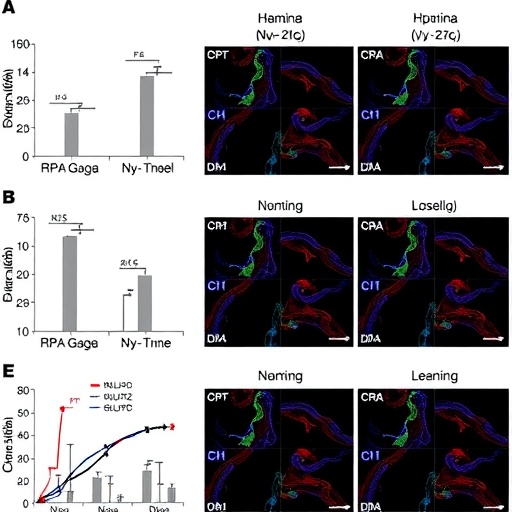Research into a genetic mutation causing some men to be infertile shows that an important protein in the sperm that is a key component of the egg fertilization process, known as phospholipase C zeta (PLC-zeta), is ineffective in these individuals.
The investigators found that they could restart the fertilization process in the lab by injecting eggs with a higher amount of the PLC-zeta protein from the infertile men than found naturally in their sperm, which suggests that this type of infertility could become reversible with medical assistance.
"Recent clinical studies have highlighted the crucial importance of PLC-zeta in human fertilization, reporting that sperm from infertile patients, who exhibited failed fertilization even after the most powerful in vitro fertilization techniques, contained either reduced amounts or mutated forms of this protein," said Dr Michail Nomikos (Qatar University, Doha, Qatar) lead author of the Biochemical Journal paper.
"Our ultimate goal is to use the tools that we are currently developing not only to treat, but also diagnose, the cases of male infertility associated with absent or dysfunctional PLC-zeta protein in human sperm."
It has been known for some time that an essential part of the human fertilization process is a repetitive, dramatic increase in calcium levels in the egg known as 'calcium oscillations' triggered by a message from the sperm that happens just before an embryo begins to form. This calcium increase is vital for all the early events of fertilization and early embryo development.
In 2002, Professor Tony Lai (Cardiff University, UK) and colleagues discovered the sperm-specific PLC-zeta protein. Over the last decade, research carried out by Professor Lai, who is also the senior author on the current study, and colleagues has shown that PLC-zeta is a key trigger of the calcium oscillations seen in the egg upon fertilization.
A number of genetic defects in the gene encoding the PLC-zeta protein have been linked to male infertility in the past. A recent study by Jessica Escoffier and colleagues identified a new mutation (single nucleotide polymorphism – I489F) located in a different part of the PLC-zeta gene (C2 domain) of two infertile brothers from Tunisia.
In the current study, Dr Nomikos and collaborators investigated the effects of this C2 domain mutation in more detail. They found that injecting the abnormal PLC-zeta protein into mouse eggs at levels comparable with those found in the sperm of the infertile men resulted in no calcium oscillations and therefore no fertilization. However, if they increased the amounts of the protein they injected to a higher level than would be present naturally, the normal fertilization process began and calcium oscillations were observed.
This finding suggests that this form of infertility could be treated in the future, say the researchers.
"The identification and characterization of another male infertility-linked PLC-zeta mutation necessitates that we begin to consider use of recombinant PLC-zeta protein in a clinical setting, with the aim being to rescue such cases of egg activation failure," commented Professor Lai.
"We believe that our research can eventually give hope to many infertile couples in the near future; our goal is to help them have a family" he added.
The team also looked at the biochemical properties of the mutant protein compared with normal PLC-zeta to try and discover more about its function. The key difference between them seemed to be that the abnormal protein was much less likely to bind to liposomes (small circular molecules that help different parts of the cell communicate with each other) containing molecules known as PI(3)P and PI(5)P than the normal protein.
The investigators are now investigating the exact role and physiological significance of the interaction of PLC-zeta with PI(3)P and PI(5)P. They believe it is possible that the mutation affects the interaction of the PLC-zeta C2 domain with another, currently unidentified egg protein or 'PLC-zeta receptor', resulting in this infertile phenotype.
"Identification of such an egg protein will be a major breakthrough in the fertilization field as it potentially may lead to identification of currently unknown causes of female infertility," said Dr Nomikos.
Commenting on the research, Professor Sir Michael Berridge, FRS, University of Cambridge, a renowned expert in calcium signalling, said: "A new life begins when the sperm fuses with the egg to inject an enzyme that initiates pulses of calcium that occur every two minutes for two hours and is responsible for activating egg development. The exact nature of this activating enzyme has been in some doubt. What Nomikos and his colleagues have done is to show that a mutation in the enzyme, which has been identified in infertile men, fails to initiate the calcium signals that triggers development. This provides definitive evidence that this is the enzyme responsible for initiating a new life."
###
Media Contact
Anastasia Stefanidou
[email protected]
@biochemsoc
http://www.biochemistry.org
############
Story Source: Materials provided by Scienmag




